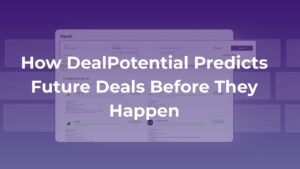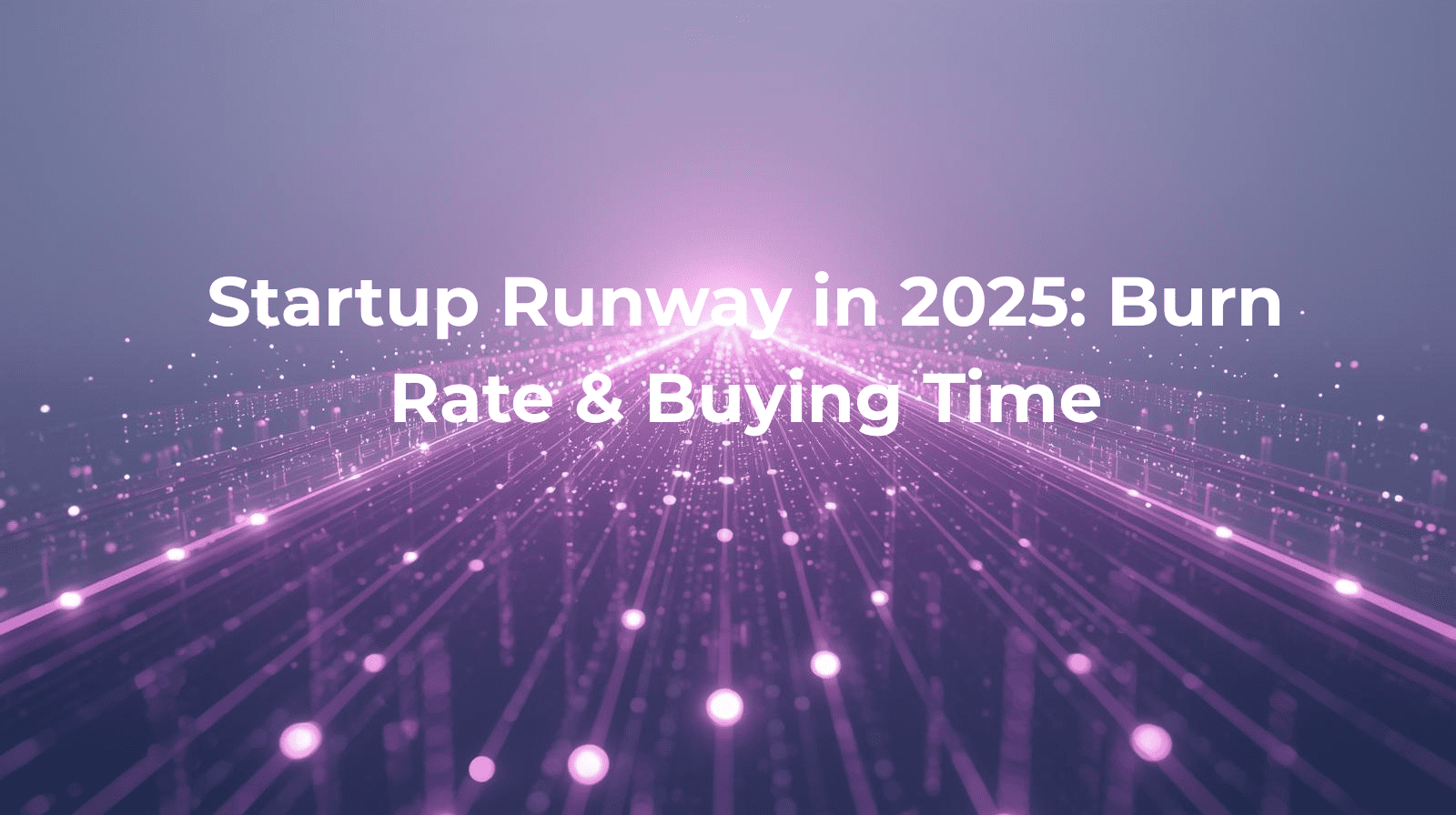
How DealPotential Predicts Future Deals Before They Happen – investment banking
Predict future M&A deals with AI-driven signals for faster sourcing. how DealPotential helps investment bankers win opportunities earlier.

In this guide, we break down everything you need to know about Startup Runway in 2025, from how to calculate burn rate to how to buy time in today’s volatile private markets. For founders and investors alike, runway is no longer just about survival it’s about leverage.
“Runway” refers to how much time a startup can continue operating before exhausting its cash reserves. In 2025, in a tighter funding environment, runway is even more critical.
Burn rate is the engine driving runway so before we stretch time, we must understand how fast cash disappears.
29 % of startups fail because they run out of money, making burn rate management foundational.
Burn rate comes in two main flavors:
Gross burn = total monthly cash outflows (salaries, infrastructure, marketing, rent, etc.).
Net burn = gross burn minus monthly revenue.
For example: if a startup spends $150,000/month and brings in $50,000, net burn is $100,000.
If you have $1.5 million in the bank and burn $100,000 net per month, your runway is 15 months (assuming no changes).
Several trends shape runway norms in 2025’s private markets:
The median Series B company increased burn by only ~8 % YoY in 2024, as investors demand capital efficiency. Development Corporate
In AI-powered startups, the burn multiple (dollars burned per dollar of new revenue) skews higher, as capital remains relatively cheap forcing tougher scrutiny over whether burn is justified. svb.com
Fundraising cycles lengthen in uncertain markets, making longer buffer runway prudent. Many seed-stage companies now target 24–30 months of buffer. scaleup.finance
Back in 2022, the median cash runway dropped from 16 months to ~12 months; that tightening persists. svb.com
In short: in 2025, you can’t “wing it.” Every dollar must earn its keep.
When you can’t magically raise more at the snap of a finger, you must stretch what you have. Here’s how top-tier founders and investors think about buying time:
Right-size your tech stack and vendor spend
Many startups oversubscribe to software tools. Cutting redundant subscriptions or renegotiating vendor contracts can reduce burn meaningfully. Digits
Optimize fixed vs variable costs
Move heavy expenses (e.g. office leases, custom contracts) into variable or modular forms when possible.
Trim discretionary spending
Pause hiring, marketing spikes, or high-cost growth experiments until your core revenue engine is stable.
Revenue acceleration & unit economics
Focus on high-contribution margins. Increase upsells, shorten sales cycles, raise ARPU (average revenue per user).
Bridge capital (venture debt, convertible notes)
When equity dilution is undesirable, structured debt or hybrid instruments can buy you runway without giving up more control. JPMorgan argues these are often part of runway-extension strategies. JPMorgan
Scenario forecasting and early planning
Don’t wait until runway is < 6 months. Begin fundraising or cost adjustments when you hit 8–10 months. Many founders regret starting too late. Jeeves+1
Monitor burn multiples
Track how many dollars you burn per dollar of new revenue (burn multiple). Aim to keep that ratio in investor-friendly territory (e.g. < 1–1.5× for growth-stage startups).
Dynamic tightening
As revenue grows, reintroduce strategic spend. But avoid overinvesting prematurely growth must consistently beat burn.

At that level, negotiation leverage drops dramatically.

If your net burn trend line is steeper than your revenue trend, your dilution per growth unit increases.

If your CAC vs LTV (customer acquisition cost vs lifetime value) doesn’t improve, every incremental dollar of burn is risk.

Capital markets shift. If your next round stalls, you must survive on discipline.
At DealPotential, we help investors and founders see ahead, not just look back. When it comes to startup runway, our platform is built to surface early signals, model funding timing, and reduce guesswork.
Here’s how we help you turn runway into a strategic edge:




DealPotential doesn’t just show who’s raising. We show who needs to and when.
That’s the difference between watching the runway disappear and helping extend it.
SHARE:
Book a free demo with DealPotential and get real-time insights on the next billion-dollar opportunities.

Predict future M&A deals with AI-driven signals for faster sourcing. how DealPotential helps investment bankers win opportunities earlier.

Common due diligence mistakes can derail M&A and PE deals. Learn how to avoid them with AI-powered insights from DealPotential. Book a demo.

AI-driven due diligence tools accelerate investor research. See how DealPotential delivers 7M+ companies, 98% accuracy.
We use cookies to improve your experience, analyze web traffic, deliver customized content, and support marketing efforts.
DealPotential Investment Intelligence Platform Proposal Agreement
WHEREAS, the Seller agrees to provide access to the DealPotential Investment Intelligence Platform,
WHEREAS, the Client agrees to purchase the DealPotential Investment Intelligence Platform according to the terms and conditions laid out in this contract.
THEREFORE, in consideration of the mutual agreement made by the parties hereto, the Seller and the Purchaser (individually, each a “Party” and collectively, the “Parties”) agree to the following:
2. Subscription: By subscribing to the Platform, you agree to pay the monthly or yearly subscription fee, as specified in your subscription plan.
3. Payment: Payment is due monthly in advance and processed via Stripe. The subscription renews automatically until cancelled.
4. Cancellation: You may cancel your subscription at any time, and it will take effect at the end of the current billing cycle. No refunds will be provided for partial months.
5. Data Privacy: We are committed to safeguarding your data. Please refer to our Privacy Policy for details on data handling and protection.
6. Intellectual Property: All content, data, and reports provided by the Platform are protected by intellectual property laws and are for your internal use only.
7. Termination: We reserve the right to terminate your access to the Platform for any violation of these terms or for any reason at our discretion.
8. Governing Law: These terms are governed by the laws of Sweden, and any disputes shall be subject to the exclusive jurisdiction of the courts in Sweden.
10. Disclaimer: We disclaim all responsibility for any decisions made by users based on the data provided in our platform. All investment decisions are solely the responsibility of the user. We are not involved in any user decisions and only provide data and assessments for informational purposes.